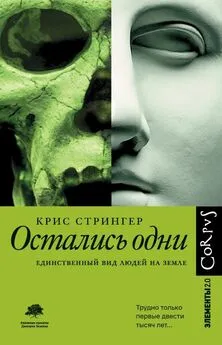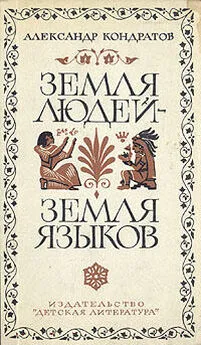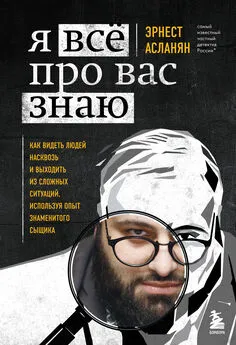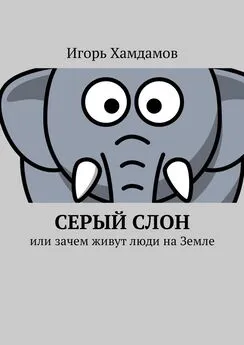Крис Стрингер - Остались одни. Единственный вид людей на земле
- Название:Остались одни. Единственный вид людей на земле
- Автор:
- Жанр:
- Издательство:Литагент Corpus
- Год:2021
- Город:Москва
- ISBN:978-5-17-982912-6
- Рейтинг:
- Избранное:Добавить в избранное
-
Отзывы:
-
Ваша оценка:
Крис Стрингер - Остались одни. Единственный вид людей на земле краткое содержание
Один из ведущих мировых специалистов, британский антрополог Крис Стрингер, тщательно собирает гигантский пазл, чтобы показать нам цельную картину: что на сегодняшний день известно науке о нас и о других представителях рода Homo, чего мы достигли в изучении своего эволюционного пути и куда движемся по нему дальше.
В формате PDF A4 сохранён издательский дизайн.
Остались одни. Единственный вид людей на земле - читать онлайн бесплатно ознакомительный отрывок
Интервал:
Закладка:
M. Haslam, C. Clarkson, M. Petraglia, R. Korisettar et al. “The 74 ka Toba super-eruption and southern Indian hominins: Archaeology, lithic technology and environment at Jwalapuram Locality 3”. Journal of Archaeological Science 37. 2010, 3370–3384.
J. Henrich. “Demography and cultural evolution: How adaptive cultural processes can produce maladaptive losses – the Tasmanian case”. American Antiquity 69. 2004, 197–214.
J. Henrich. “The evolution of costly displays, cooperation and religion: Credibility enhancing displays and their implications for cultural evolution”. Evolution and Human Behavior 30. 2009, 244–260.
J. Henrich, R. Boyd, P. J. Richerson. “Five misunderstandings about cultural evolution”. Human Nature 19. 2008, 119–137.
J. Henrich, R. McElreath. “The evolution of cultural evolution”. Evolutionary Anthropology 12. 2003, 123–135.
C. S. Henshilwood, F. d’Errico, I. Watts. “Engraved ochres from the Middle Stone Age levels at Blombos Cave, South Africa”. Journal of Human Evolution 57. 2009, 27–47.
The HUGO Pan-Asian SNP Consortium. “Mapping human genetic diversity in Asia”. Science 326. 2009, 1541–1545.
J. Kingdon. Self-made Man and His Undoing . Simon & Schuster, London, 1993.
R. G. Klein. The Human Career . University of Chicago Press, Chicago, 1999.
R. G. Klein. “Out of Africa and the evolution of human behavior”. Evolutionary Anthropology 17. 2008, 267–281.
R. G. Klein, G. Avery, K. Cruz-Uribe, D. Halkett, J. E. Parkington, T. Steele, P. Thomas, T. P. Volman, R. Yates. “The Ysterfontein 1 Middle Stone Age site, South Africa, and early human exploitation of coastal resources”. Proceedings of the National Academy of Sciences USA 101. 2004, 5708–5715.
M. M. Lahr. The Evolution of Modern Human Diversity: A Study of Cranial Variation . Cambridge University Press, Cambridge, 1996.
M. M. Lahr, R. A. Foley. “Multiple dispersals and modern human origins”. Evolutionary Anthropology 3. 1994, 48–60.
M. M. Lahr, R. A. Foley. “Towards a theory of modern human origins: Geography, demography and diversity in recent human evolution”. Yearbook of Physical Anthropology 41. 1998, 137–176.
D. E. Lieberman. “Speculations about the selective basis for modern human craniofacial form”. Evolutionary Anthropology 17. 2008, 55–68.
D. E. Lieberman, B. M. McBratney, G. Krovitz. “The evolution and development of cranial form in Homo sapiens ”. Proceedings of the National Academy of Sciences USA 99. 2002, 1134–1139.
C. W. Marean, M. Bar-Matthews, J. Bernatchez, J. Fisher, P. Goldberg, A. Herries, Z. Jacobs, A. Jerardino, P. Karkanas, T. Minichillo, P. J. Nilssen, E. Thompson, I. Watts, H. M. Williams. “Early human use of marine resources and pigment in South Africa during the Middle Pleistocene”. Nature 449. 2007, 905–908.
G. Miller. The Mating Mind: How Sexual Choice Shaped the Evolution of Human Nature . Heinemann, London, 2000.
J. F. O’Connell, J. Allen. “Dating the colonization of Sahul. Pleistocene Australia – New Guinea: A review of recent research”. Journal of Archaeological Science 31. 2004, 835–853.
J. F. O’Connell, J. Allen. “Pre-LGM Sahul. Pleistocene Australia – New Guinea and the archaeology of early modern humans”. In P. Mellars, K. Boyle, O. Bar-Yosef, C. Stringer, eds. Rethinking the Human Revolution , 395–410. McDonald Institute for Archaeological Research, Cambridge, 2007.
J. F. O’Connell, J. Allen, K. Hawkes. “Pleistocene Sahul and the origins of seafaring”. In A. Anderson, J. Barrett, K. Boyle, eds. The Global Origins and Development of Seafaring , 58–69. McDonald Institute for Archaeological Research, Cambridge, 2010.
S. Oppenheimer. “The great arc of dispersal of modern humans: Africa to Australia”. Quaternary International 202. 2009, 2–13.
J. E. Parkington. Shorelines, Strandlopers and Shell Middens . Creda Communications, Cape Town, 2006.
O. M. Pearson. “Postcranial remains and the origin of modern humans”. Evolutionary Anthropology 9. 2000, 229–247.
O. M. Pearson. “Statistical and biological definitions of ‘anatomically modern’ humans: Suggestions for a unified approach to modern morphology”. Evolutionary Anthropology 17. 2008, 38–48.
M. D. Petraglia. “Mind the gap: Factoring the Arabian Peninsula and the Indian Subcontinent into Out of Africa models”. In P. Mellars, K. Boyle, O. Bar-Yosef, C. Stringer, eds. Rethinking the Human Revolution , 383–94. McDonald Institute for Archaeological Research, Cambridge, 2007.
M. D. Petraglia, M. Haslam, D. Q. Fuller, N. Boivin, C. Clarkson. “Out of Africa: New hypotheses and evidence for the dispersal of Homo sapiens along the Indian Ocean rim”. Annals of Human Biology 37. 2010, 288–311.
M. D. Petraglia, R. Korisettar, N. Boivin, C. Clarkson, P. Ditchfield, S. Jones, J. Koshy et al. “Middle Paleolithic assemblages from the Indian subcontinent before and after the Toba Super-Eruption”. Science 317. 2007, 114–116.
P. B. Pettitt. “The living as symbols, the dead as symbols: Problematising the scale and pace of hominin symbolic evolution”. In C. Henshilwood, F. d’Errico, eds. Homo Symbolicus: The Origins of Language, Symbolism and Belief . University of Bergen Press, Bergen, in press.
P. B. Pettitt. “The Neanderthal dead: Exploring mortuary variability in Middle Palaeolithic Eurasia”. Before Farming 1. 2002, 1–19.
A. Powell, S. Shennan, M. Thomas. “Late Pleistocene demography and the appearance of modern human behavior”. Science 324. 2009, 1298–1301.
M. Revel, E. Ducassou, F. E. Grousset, S. M. Bernasconi, S. Migeon, S. Revillon, J. Mascle, A. Murat, S. Zaragosi, D. Bosch. “100,000 years of African monsoon variability recorded in sediments of the Nile margin”. Quaternary Science Reviews 29. 2010, 1342–1362.
G. P. Rightmire. “ Homo in the Middle Pleistocene: Hypodigms, variation, and species recognition”. Evolutionary Anthropology 17. 2008, 8–21.
E. J. Rohling, Q. S. Liu, A. P. Roberts, J. D. Stanford, S. O. Rasmussen, P. L. Langen, M. Siddall. “Controls on the East Asian monsoon during the last glacial cycle, based on comparison between Hulu Cave and polar ice-core records”. Quaternary Science Reviews 28. 27–28. 2009, 3294–3302.
J. I. Rose. “New light on human prehistory in the Arabo-Persian Gulf Oasis”. Current Anthropology 51. 6. 2010, 849–883.
K. R. Rosenberg, L. Zune, C. B. Ruff. “Body size, body proportions and encephalization in a Middle Pleistocene archaic human from northern China”. Proceedings of the National Academy of Sciences USA 103. 2006, 3552–3556.
K. Ryosuke, T. Yamaguchi, M. Takeda, O. Kondo, T. Toma, K. Haneji, T. Hanihara, H. Matsukusa, S. Kawamura, K. Maki, M. Osawa, H. Ishida, H. Oota. “A common variation in EDAR is a genetic determinant of shovel-shaped incisors”. American Journal of Human Genetics 85. 4. 2009, 528–535.
C. Sauer. “Seashore – primitive home of man?” Proceedings of the American Philosophical Society 106. 1962, 41–47.
C. Scholz, A. Cohen, T. Johnson, J. King, M. Talbot and E. Brown. “Scientific drilling in the Great Rift Valley: The 2005 Lake Malawi Scientific Drilling Project – an overview of the past 145,000 years of climate variability in Southern Hemisphere East Africa”. Palaeogeography, Palaeoclimatology, Palaeoecology 303. 2011, 3–19.
C. A. Scholz, T. C. Johnson, A. S. Cohen, J. W. King, J. A. Peck, J. T. Overpeck, M. R. Talbot et al. “East African megadroughts between 135 and 75 thousand years ago and bearing on early-modern human origins”. Proceedings of the National Academy of Sciences USA 104. 2007, 16422–16427.
J. Shea. “ Homo sapiens is as Homo sapiens was”. Current Anthropology 52. 2011, 1–35.
S. Shennan. “Demography and cultural innovation: A model and its implications for the emergence of modern human culture”. Cambridge Archaeological Journal 11. 2001, 5–16.
S. Shennan. “Descent with modification and the archaeological record”. Philosophical Transactions of the Royal Society B 366. 2011, 1070–1079.
P. Soares, L. Ermini, N. Thomson, M. Mormina, T. Rito, A. Rohl, A. Salas, S. Oppenheimer, V. Macaulay, M. B. Richards. “Correcting for purifying selection: An improved human mitochondrial molecular clock”. American Journal of Human Genetics 84. 2009, 1–20.
O. Soffer. “Ancestral lifeways in Eurasia – the Middle and Upper Paleolithic records”. In M. H. Nitecki, D. V. Nitecki, eds. Origins of Anatomically Modern Humans , 101–119. Plenum Press, New York, 1994.
C. B. Stringer. “Coasting out of Africa”. Nature 405. 2000, 24–27.
C. B. Stringer. “Reconstructing recent human evolution”. Philosophical Transactions of the Royal Society, London. B 337. 1992, 217–224.
J. Svoboda. “The Upper Paleolithic burial sites at Predmosti: Ritual and taphonomy”. Journal of Human Evolution 54. 2008, 15–33.
J.-P. Texier, G. Porraz, J. Parkington, J.-P. Rigaud, C. Poggenpoel, C. Miller, C. Tribolo, C. Cartwright, A. Coudenneau, R. Klein, T. Steele, C. Verna. “A Howiesons Poort tradition of engraving ostrich eggshell containers dated to 60,000 years ago at Diepkloof Rock Shelter, South Africa”. Proceedings of the National Academy of Sciences USA 107. 2010, 7621–7622. doi:10.1073/pnas.0913047107.
J. E. Tierney, J. M. Russell, Y. S. Huang, A. S. Cohen. “Northern Hemisphere controls on tropical Southeast African climate during the last 60,000 years”. Science 322. 2008, 252–255.
E. Trinkaus, J. Svoboda, eds. Early Modern Human Evolution in Central Europe: The People of Dolni Vĕstonice and Pavlov . Oxford University Press, Oxford, 2006.
P. Utrilla, C. Mazo, M. C. Sopena, M. Martinez-Bea, R. Domingo. “A Palaeolithic map from 13,660 calBP: Engraved stone blocks from the Late Magdalenian in Abauntz Cave. Navarra, Spain”. Journal of Human Evolution 57. 2. 2009, 99–111.
D. Verschuren, J. M. Russell. “Paleolimnology of African lakes: Beyond the exploration phase”. PAGES News 17. 3. 2009, 112–114.
I. Watts. “Ochre in the Middle Stone Age of southern Africa: Ritualised display or hide preservative?” South African Archaeological Bulletin 57. 2002, 1–14.
I. Watts. “Red ochre, body painting and language: Interpreting the Blombos ochre”. In R. Botha, C. Knight, eds. The Cradle of Language , 62–92. Oxford University Press, Oxford, 2009.
T. Weaver, C. Roseman, C. Stringer. “Were Neandertal and modern human cranial differences produced by natural selection or genetic drift?” Journal of Human Evolution 53. 2007, 135–145.
T. D. White, B. Asfaw, D. Degusta, W. H. Gilbert, G. D. Richards, G. Suwa, F. C. Howell. “Pleistocene Homo sapiens from Middle Awash, Ethiopia”. Nature 423. 2003, 742–747.
T. Wynn. “Archaeology and cognitive evolution”. Behavioral and Brain Sciences 25. 2002, 389–438.
T. Wynn, F. L. Coolidge. “Beyond symbolism and language”. Current Anthropology 51. 2010, 5–16.
T. Wynn, F. L. Coolidge. “Did a small but significant enhancement in working memory capacity power the evolution of modern thinking?” In P. Mellars, K. Boyle, O. Bar-Yosef, C. Stringer, eds. Rethinking the Human Revolution , 79–90. McDonald Institute for Archaeological Research, Cambridge, 2007.
Читать дальшеИнтервал:
Закладка:










